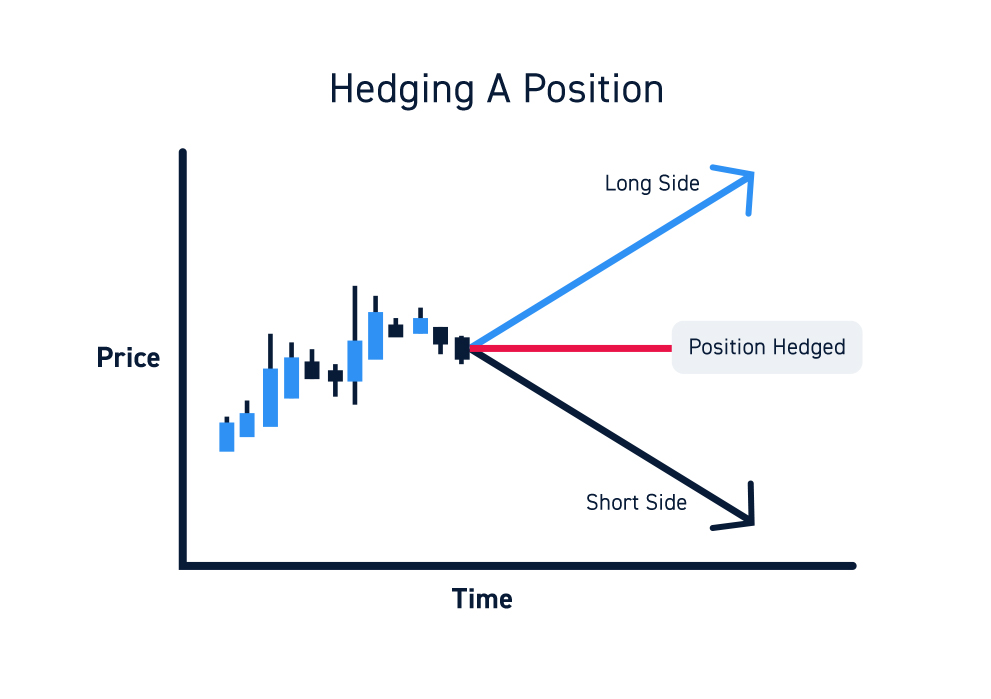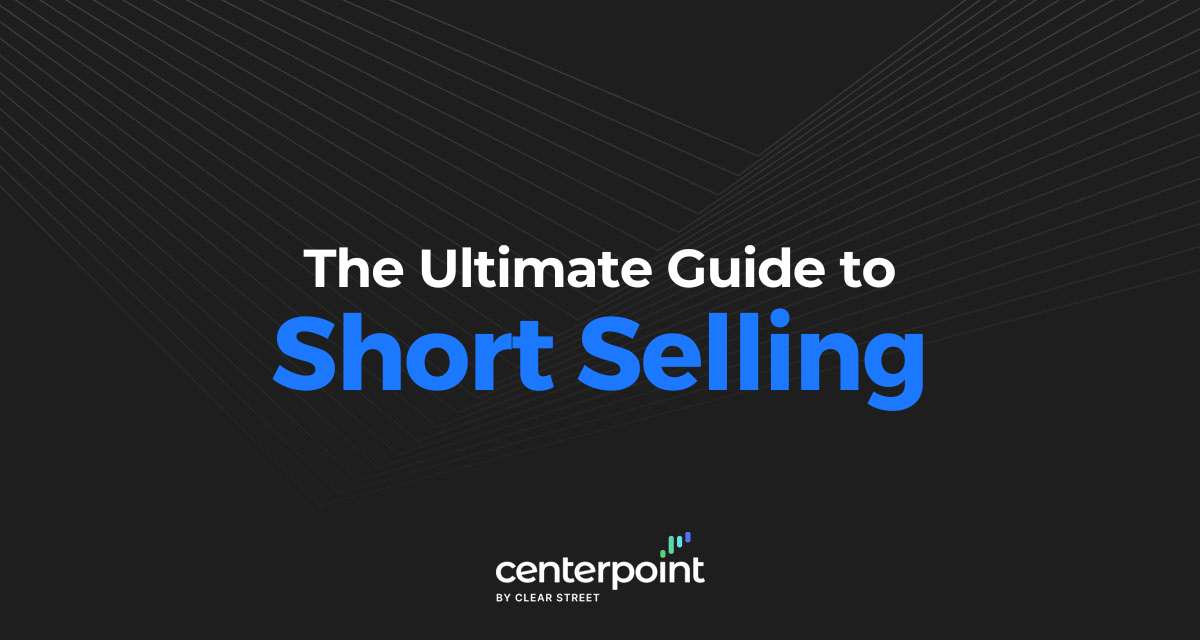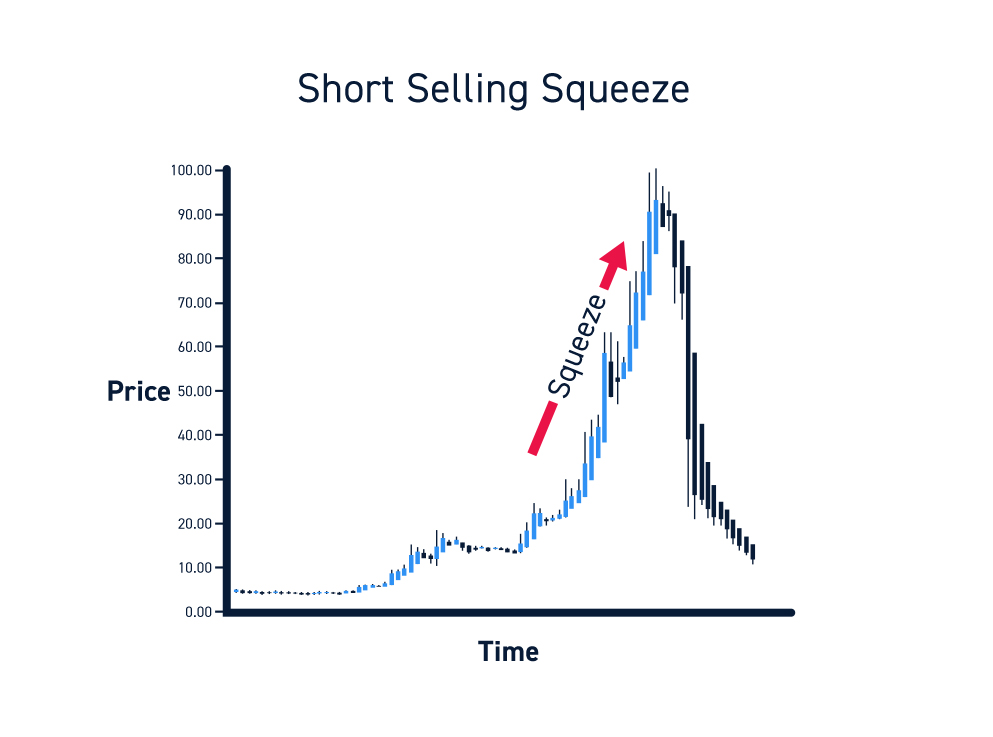Buy low and sell higher is how profits are made trading the long side of a stock price move. This strategy is practiced by traders and investors. However, it is possible to also profit on falling stock prices by short selling the shares. This is the inverse of the long strategy by selling high and buying back lower.
What is Short Selling?
Short selling is the practice of selling (borrowed) stock high with the intent to buy back at lower prices for a profit, sell high and buy back lower. This is riskier than playing long since the potential loss is unlimited. For example, if you buy a stock long at $20, the maximum risk is (-$20) if it goes to zero. However, if you short sell a stock at $20, the losses are unlimited since the stock can rise without a ceiling. Short selling profits from falling prices, however, it also generates losses if prices rise.
How Short Selling Works
The mechanics of short selling involve borrowing shares in order to (short) sell them and then buying them back (covering the short) from the open market to return them. The availability of borrowable shares determines if a stock is shortable. Widely traded stocks tend to be readily shortable with virtually no supply restrictions. Thinner liquidity stocks may be more difficult to borrow.
Short Selling Requirements
A margin account is required to have the ability to short sell or sell shares short. It also helps to have more than the Pattern Day Trader (PDT) rule minimum of $25,000 capital in the account. Most importantly, shares must be borrowable in order to short the stock.
Understanding Borrows and Locates
In order to short sell a stock, you need to be able to borrow shares.
Widely traded stocks tend to be readily shortable with virtually no supply restrictions. These are considered easy-to-borrow (ETB) shares. Thinner liquidity stocks may be much more difficult to borrow than ETB names.
Every broker has a short inventory of stocks and available shares to borrow. Stocks not on an ETB list will require a short locate request. This starts the process of searching for borrowable shares which entails the broker contacting clearing firms and various third-party liquidity providers. If the requested shares are located, the trader has the option to borrow the shares or pass.
Direct market access (DMA) brokerage platforms usually have the locate request embedded directly into the platform for speed and convenience. Stocks that are not ETB usually have fees associated with locating and borrowing the shares to short.
Benefits of Short Selling
The biggest benefit of short selling is being able to profit from falling prices. It enables traders to play both sides of a stock’s price action. It provides the flexibility of trading the long side to profit from rising prices as well as trading the short side when prices are falling.
Short selling also enables traders to hedge positions by short selling an index ETF using a delta-based hedging strategy. It can also provide options holders a way to hedge or collar gains by shorting the underlying stock. This is especially helpful when holding options while prices are moving in the pre and post-market sessions when the options market is closed.

What Short Sellers Should Be Aware Of
Short selling has various structural and mechanical factors to be aware of in addition to the technical price patterns.
Normally, you can short the stock just like selling it on the bid. However, some stocks may have the uptick rule in place. This means shorts can only be executed on the inside ask price.
If a shorted stock moves higher, you have to be aware of the potential for a margin call, which will require you to liquidate some or all of your position unless you can deposit funds.
Borrow fees are the interest charged to borrow the shares. The longer you hold the short position, the more interest you will be paying out.
Locate fees are charged when a locate request is made and you accept the shares. These can be a flat fee or a percentage of the value of the shares depending on your broker.
Speaking of brokers, not all of them have the same resources or capacity for providing a large short inventory or access to thin and hard to borrow stocks. Direct market access brokers tend to have specialists in place to quickly and efficiently locate shares whereas conventional discount brokers may be slow or not provide locate services.
What to Pay Attention To Before Shorting a Stock
Prior to actually placing an order to short sell a stock, it’s critical to pay attention to various factors.
Volatility has to be monitored ahead of time to gauge the potential price ranges and how high or low the shares can move. Especially how much they can rise against you and having a plan if they do.
Stocks that experience high volatility tend to have a catalyst triggering it. Be aware of the catalyst, whether it’s a binary event, a rumor, a judicial action and the potential for a stock halt. The catalyst can help you determine whether the move is legitimate and sticking or temporary and due for reversion.
There are key metrics to be aware of that make a material impact. The short interest is the number of shares that are actually held short as of a certain date. The short percentage of float gives an indication of the potential for short squeeze. Stocks with short interest of more than 25% of the float are highly susceptible for a short squeeze and the days to cover is an indication of how long it can last. Hard to borrow shares are the riskiest since the availability of shares can disappear. Unlike ETB shares, that enable short sellers to average in their prices, hard to borrow shares can trap short sellers with no ability to short more.
Short Selling Risk
The perfect storm nightmare scenario is when a short squeeze triggers margin calls which trigger forced liquidation from the broker by automatically covering shorts with market orders further driving up the stock price and triggering more forced liquidations. This can leave many trader’s heads spinning and confused as to why their broker liquidated their short position and at the highest prices
Before this ever happens to you, make sure you are constantly monitoring the maintenance margin requirements. These can change instantly during the day. The normal 4-to-1 or 25% margin requirement for intraday stocks is what traders are used to. When it changes to a 2-to-1 or 50% or even 1-to-1 or 100% maintenance margin, it can instantly trigger margin calls if you used up all your buying power.
Therefore, never use all your buying power on your trades. Also monitor short share availability and the maintenance margin throughout the day so you can react accordingly, instead of having the brokerage act. Short selling has unlimited risk, meaning you can lose all your money in one trade. Unfortunately, new day traders find out about this the hard way. Always plan ahead and monitor your risk accordingly.










